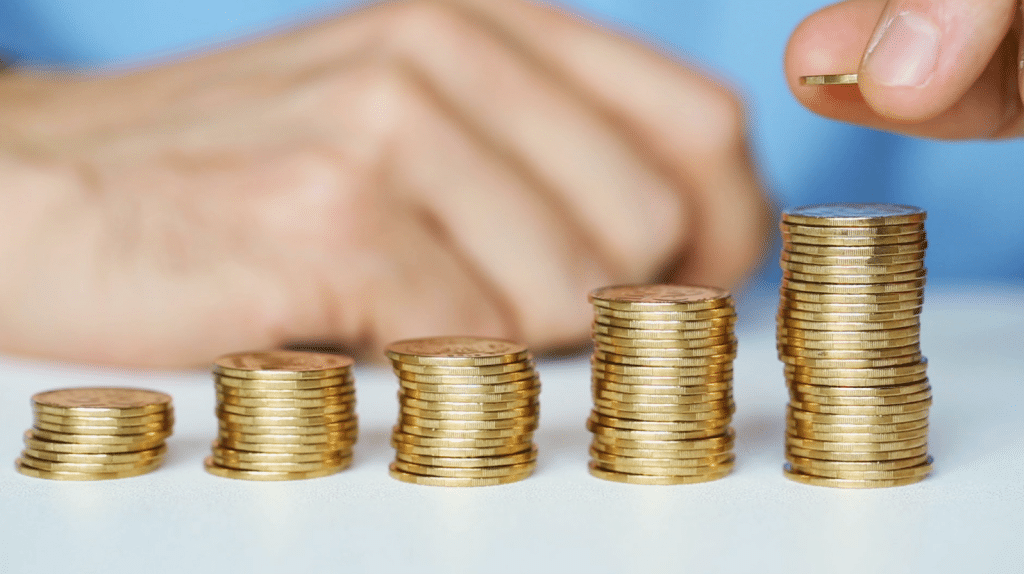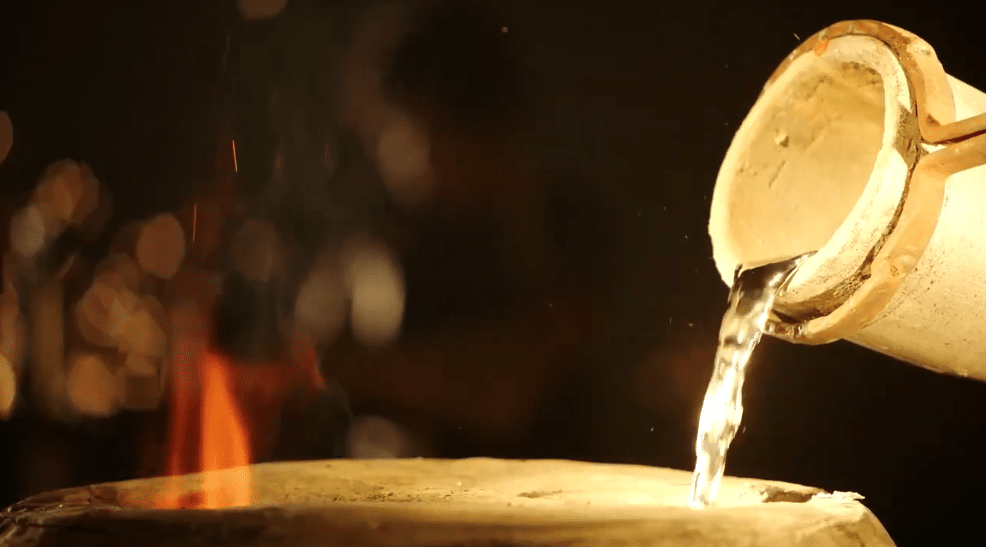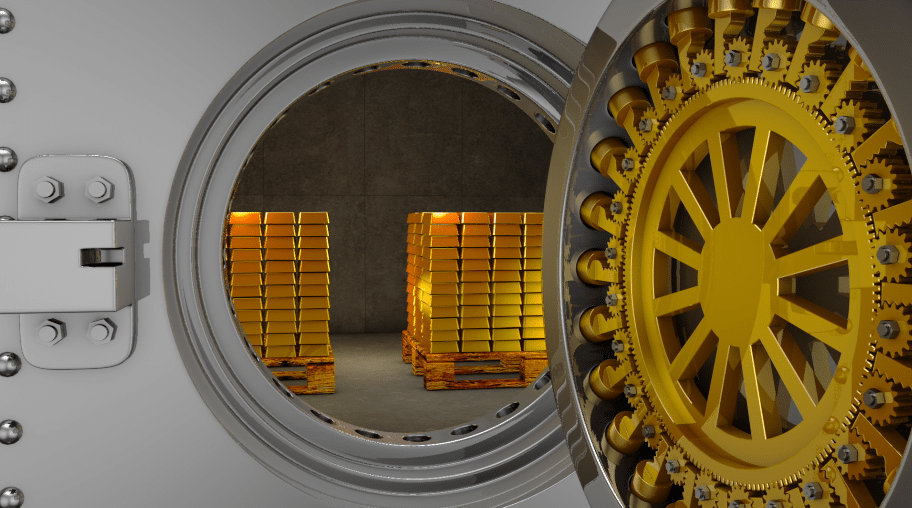Why Do Gold Coins Cost More Than Spot?

Did you know that gold coins generally cost 5-10% more than the spot price of gold?
You're probably wondering why. It's not just about the gold content. There's more to the story.
The minting process, the premiums added by sellers, fluctuating market conditions, and even the coin's rarity and condition all play crucial roles in the final price of a gold coin. To properly understand why gold coins cost more than spot, we will cover the following key points
- Production Costs
- Premiums
- Demand and Supply
- Market Conditions
- Rarity and Condition
- Storage and Security
- Gold-Backed IRA Account
These factors add to the intrinsic value of the coin beyond the value of the gold contained within it.
So, when you're investing in gold coins, you're paying for more than just the gold - you're investing in a piece of art, history, and workmanship.

Production Costs
When you're buying gold coins, you're not just paying for the raw gold; you're also covering the costs of production. It's crucial to understand that the minting of coins and bars involves additional expenses not factored into the spot price. These expenses include aspects like the design, production, and distribution of the coins and bars.
Each coin or bar's production cost can vary significantly. Factors such as the type, size, and production method of the coin or bar come into play. For example, larger coins or bars may require more raw materials and labor to produce, thereby increasing their cost. Similarly, coins with intricate designs or special features may necessitate more complex production processes, further driving up costs.
Moreover, the production of gold coins isn't a simple process. It involves numerous stages, each with its cost. These stages include the extraction of the raw material, refining it into a usable form, designing the coin, producing it through a minting process, and finally distributing it to the market.
Lastly, it's important to mention that the production costs also account for the higher price of gold and silver coins and bars. The cost of producing and minting coins and bars can be quite high, which inevitably affects the final price you pay.
Premiums
You're probably wondering why you're still paying more even after covering the production costs; well, that's where premiums come into play. These are additional costs charged above the spot price, which is the real-time market price of a commodity such as gold. Premiums are designed to cover all expenses associated with producing and distributing gold coins and bars.
You see, every gold coin or bar that comes into the market has a journey. This journey begins with the extraction of raw gold, which then gets refined and minted into coins or bars. After minting, these products need distribution, which also includes insurance and handling costs. All these costs constitute the premium on a gold coin or bar.
The value of premiums varies depending on several factors. The type of coin or bar is crucial, with those of limited mintage or historical significance usually commanding higher premiums. The reason being, these coins are more sought after by collectors and investors, and demand drives up their price.
Now, you might ask, 'Does high demand always mean higher premiums?' Not necessarily. While it's true that increased demand can lead to higher premiums, bear in mind that the supply of coins or bars also influences their price. If the supply of a particular coin or bar is limited, even a slight increase in demand can create a significant spike in its premium.
Demand and Supply
Let's delve into the role of demand and supply in determining the cost of gold coins and bars.
Demand for these precious items fluctuates based on a myriad of factors. Geopolitical tensions or economic uncertainties can drive investors to seek out gold as a safe haven, thereby increasing demand. Inflation fears can also cause people to hold onto tangible assets like gold, further driving up demand. As demand increases, the price of coins and bars also rises.
On the other side of the coin is supply. Gold isn't limitless. There's only so much of it that can be mined, refined, and minted into coins and bars. Certain types of gold coins, especially those with historical significance or limited mintage, have a constrained supply. This limited availability can drive prices up as investors compete to secure these desirable items.
In this interplay of demand and supply, the higher price of gold coins and bars above spot price is influenced. Spot price, remember, is the current market price of gold, updated in real-time. But this spot price doesn't factor in the costs of production, distribution, and the dynamics of demand and supply.
Market Conditions
Understanding how market conditions influence the price of gold coins and bars is crucial in making informed investment decisions. The global market is a complex entity, with various factors causing fluctuations that can impact the price of precious metals.
In times of economic stability, the demand for gold might be relatively steady, and prices might reflect the spot price relatively closely. However, during periods of uncertainty and volatility, you'll often notice a surge in gold prices. This is because investors tend to turn to gold as a safe haven during stock market downturns, driving up the demand and, consequently, the price of gold coins and bars.
The price of gold doesn't just react to economic volatility. Political instability, geopolitical tensions, and global events can also cause investors to flock to gold, pushing prices up. On the other hand, positive economic indicators or advancements in gold mining technology can increase the supply of gold, potentially driving prices down.
Premiums on gold coins and bars also respond to market conditions. When demand is high, premiums often increase. This is due to the additional cost of producing and distributing the coins and bars. Conversely, when demand is low, premiums may decrease to attract buyers.
Benefits of Working with a Reputable Gold Investment Company
When starting on the path of gold investing, working with a credible and trustworthy precious metals vendor is key. Finding an established gold investment company that understands the many vacillations of the gold markets and the numerous variables affecting its price will save much time and hassle. Working with a reputable company with institutional knowledge can assist you with logical price entry points, positioning, and dollar-cost-averaging so you can maximize your investment capital.
Gold IRAs provide additional advantages to merely buying gold from a local dealer. Furthermore, these companies can provide serious gold investors access to competitive prices, transparency, a sound buyback policy, reliable customer service, and robust security protection of their precious metal investments.
Tap the banner below to visit Augusta Precious Metals to visit their official site to receive their gold IRA checklist
Rarity and Condition
Moving onto the concept of rarity and condition, it's important to know that these factors can significantly affect the value of gold coins and bars. Just like other collectibles, gold coins and bars can appreciate in value based on their rarity and condition. Also, knowing the types of coins to buy for investment is important long term.
- Rarity:Rare gold coins and bars can command higher prices due to their scarcity. For instance, those originating from historic periods or with limited mintage can be particularly valuable. Coins from defunct mints or those featuring unique designs can also be more expensive. The reason is simple: collectors and investors are often willing to pay a premium for items that are hard to come by.
- Condition:Gold coins and bars in excellent condition can be worth significantly more than those that are not. This is because collectors and investors often prefer items that have been well-preserved. Items with minimal wear and tear, original luster, and clear inscriptions are usually more desirable. As a result, they can fetch higher prices on the market.
- Grading: Professional grading can also impact the value of a coin or bar. Coins and bars that have been professionally graded and certified as being in excellent condition can command higher prices. This is because the grading process provides an independent verification of the item's condition, which can give buyers greater confidence in their purchase.

Storage and Security
When you invest in gold coins and bars, you also need to consider the costs associated with storage and security. These costs are often overlooked, but they play a significant role in the overall price of your investment.
Firstly, let's delve into the issue of storage. Gold, being a tangible asset, requires physical space for storage. If you're buying a substantial amount, you can't just tuck it away in a drawer at home. You need a secure facility such as a vault. These secure storage facilities aren't free. They charge fees that can add to the cost of owning gold. This cost increases with the quantity and value of the gold you're storing.
Secondly, there's the matter of security. Gold is a highly coveted asset and theft is a real risk. To protect your investment, you need to employ security measures. These may include security systems, surveillance, insurance, or even hiring security personnel. All these measures come with costs that add to the overall price of owning gold.
In addition, if you're storing your gold in a different country for diversification purposes, there are additional costs involved. These include shipping costs, customs duties and taxes, and possibly even travel costs if you want to inspect your holdings personally.
Gold Backed IRA Account
Working with a long-established and trusted gold IRA company can provide access to competitive prices, price transparency, a reasonable buyback policy, reliable customer service, and security of your precious metals.
Depending on whether you are a high-net investor looking to take advantage of the best volume prices or require a lower investment minimum and affordable entry to the gold market, or own the physical gold in your place of residence we have researched and reviewed our top 4 gold IRA and precious metal investment companies that meet those individual needs.
Conclusion
So, now you've got it. Gold coins cost more than their spot price due to several factors - production costs, premiums, supply and demand, market conditions, and the coin's rarity and condition.
Even storage and security play a role. As you delve into the gold investment world, keep these elements in mind.
They'll help you make savvy decisions, understand the market's whims, and potentially turn your shiny investment into a golden opportunity.
If you have 100k in savings to protect and want to take advantage of the best prices, attend a gold educational webinar hosted by Augusta Precious Metals. Tap the button below:
Find the right company for you. Obtain a gold IRA guide and talk to a broker




More Featured Articles
Gold IRA FAQs

Adam ONeill
Author, lifelong investor, and creator of PreciousMetalsInvestmentPortfolio.com


